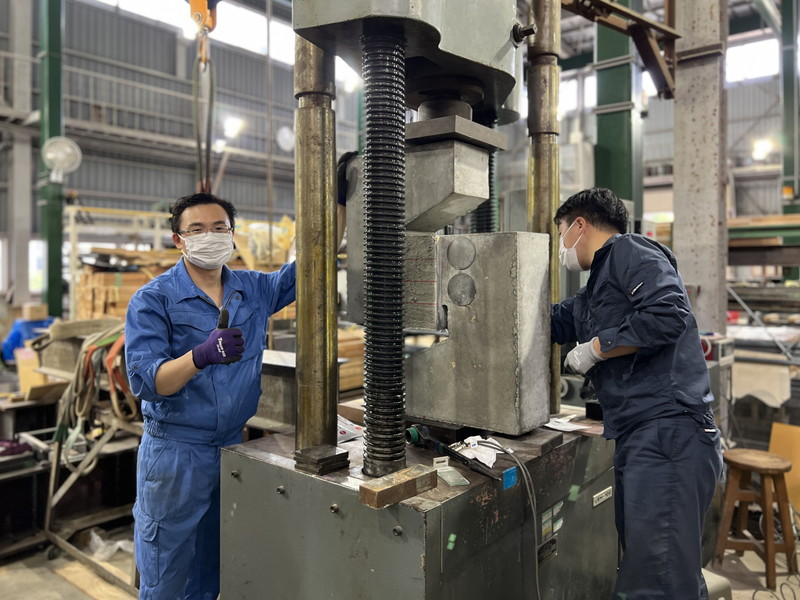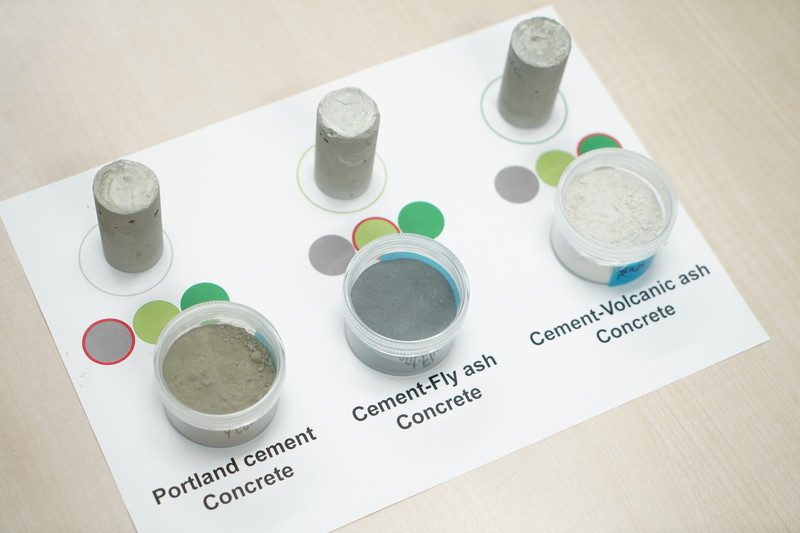NEWS
IROAST Researchers - Assoc. Prof. Gaochuang Cai
English Japanese
To develop high earthquake-resistant and resilient building structures that greatly contribute to the construction of a safe and sustainable society

Assoc. Prof. Gaochuang CAI
International Research Organization for Advanced Science and Technology (IROAST)
(Period at IROAST: from October 2021)
During large-scale natural disasters such as earthquakes, the safety of building structures is of paramount importance. Associate Professor Gaochuang Cai is aiming to improve the seismic performance of buildings through improving structural design and optimization and applying higher performance materials. He is also conducting experimental and numerical research to improve the continuous usability of buildings after earthquakes and the sustainable development of buildings.
■ The aim of this research is to build a higher earthquake-resistant and resilient and low-carbon society
Q: Please tell us about the content of your research.
Cai: My research field is structural engineering and building materials, which is especially aimed at resolving two social issues.
The first is, “How to ensure that buildings are safe in a strong earthquake?”. We aim to improve the seismic performance of buildings through understanding the performance and response characteristics of building structures under strong earthquakes, and for which we are performing the research on high-performance structural designs that make sure the structures do not collapse even under extreme loads and on the detailed processing technology of the structural elements.
A typical example is resilient reinforced concrete structures. Restoring force, which is expressed by the word resilience, has been a focus of research since the Great Hanshin earthquake in 1995. Even if a building does not collapse, if there is large residual deformation of the structure, not only is it unusable, but it is also expensive to demolish. If it is possible to ensure that structures have a strong self-centering capacity, then that would be significant for disaster prevention and mitigation.
The second issue is, “How do we promote the sustainable development of building structures?” We are also focusing on the technologies to better recycle industrial wastes and the application of natural waste products such as volcanic ash instead of traditional cement to improve the sustainability of building structures. In 2019, the Japanese cement industry emitted 41.47 million tons of carbon dioxide, so reducing the amount of cement used in construction is of great significance which is also the background of our research. Another recent concern is how to reuse the waste products generated through the demolition process if a building must be demolished. We are tackling this topic with our colleagues at the Technische Universität Darmstadt in Germany. I believe these research outcomes can contribute to the construction of a low-carbon, decarbonized society.
One example of research aiming to resolve these two issues is to use an innovative low-bond ultrahigh-strength reinforcing bars for reinforced concrete structures. Traditional deformed reinforcing bars, commonly known as rebars, have ribs at regular intervals which increase the bond strength with the surrounding concrete. Combining high-tensile rebar with high-compression concrete makes RC (reinforced concrete) structures ductile and deformable, contributing to their seismic performance. However, large deformation of the structures, even if they do not collapse, usually makes the steel surface material such as concrete prone to spalling and damage which hinders the self-centering of the structure.
The low-bond ultrahigh-strength reinforcing bars used in our laboratory are deformed steels with 6 spiral-shaped grooves on their surface, and by reducing the bond damage the concrete surrounding the bars is not affected significantly, even under repeated loads. This gives a strong self-centering force to RC elements even when at a large deformation stage. However, further research is needed on the safety of these structures under strong earthquakes. We have recently optimized the detailed components of the structures and are establishing higher precision numerical simulation methods, including AI-based evaluation methods and optimization technologies.

Q: What kind of methods do you use in your research?
Cai: We use a wide range of methods, including theoretical analysis, experimental study, and computer simulation (e.g., AI simulation and optimization). We have also completed a new loading system to conduct structural experiments to better simulate the effect of an earthquake on building structures. It is a relatively large-scale experimental system, with which we can expect future development of new computational methods, analytical methods, and simulation software that will greatly contribute to the construction industry and society as a whole.
Q: Are you conducting joint research?
Cai: Yes, we are conducting joint research on high-performance textile-reinforced concrete with our collaboration partners at the University of Lyon in France. It is well known that concrete has a good compression property but a relatively weak tensile strength. Thus, the material’s properties can be significantly improved by reinforcing their tensile using high-performance materials such as textile fabric. Adding this strengthened fiber mesh improves the deformability of concrete materials and elements, preventing concrete damage and spalling even if the structures would deform under an earthquake.
In addition, we have signed an agreement between our group and a national laboratory (Laboratoire de Tribologie et Dynamique des Systèmes, LTDS) at the University of Lyon, and are providing joint supervision for two doctoral students at that university in France. The two students’ research topics are “Performance evaluation methods of high ductile fiber reinforced cementitious composites under environmental impacts and external loads” and “Structural performance evaluation of sustainable reinforced concrete shear walls”, respectively. Besides, we have just started a joint international research project focusing on “Performance evaluation methods and seismic design methods of resilient reinforced concrete beam-column joints” with Sichuan University in China. At the same time, we have also started an international collaboration about the damage control technology of infilled walls in reinforced concrete frame structures with the Southwest Jiaotong University in China. Recently, a joint research has also been started about the application of AI technologies for performance evaluation and optimization of composite structures, with our partners from the City, University of London in the UK.

■ There is an environment that enables active engagement in interdisciplinary research and joint international research
Q: What are the advantages of IROAST?
Cai: The first is that the IROAST provides adequate research funds. This allows us to freely pursue our research in an independent research environment. For this, we were also able to develop the newly completed structural experiment system with these research funds.
On the other hand, other non-research work is reduced for tenure track staff, which ensures that researchers have enough time for research and also makes it easy to allocate enough time to international collaboration and research exchange. Being able to build a strong research network while enrolled at IROAST is extremely useful for young researchers. Thus, I think it would be good for academically ambitious researchers to work in a dynamical place like the IROAST.
Q: What do you think are the positive aspects of Kumamoto University?
Cai: It is a university that allows academic freedom, and the university focuses on both basic and applied research. I have been able to conduct various research activities, including interdisciplinary research in my own field of research. I am also especially thankful that the university prioritizes international research activities, as I am engaged in international research cooperation, mainly in Europe and China.
Q: What is your message to people considering research at Kumamoto University or IROAST?
Cai: Kumamoto University is a university with a long history, and has a passion and vitality for modern research, academic freedom, and education. The university is also promoting collaboration with overseas, which is especially beneficial when there is much research conducted with overseas, such as myself. In addition, a large number of support and assistance strategies for young researchers are available. Kumamoto is also a quiet place surrounded by nature, and the locals are very kind. All colleagues at the university are very enthusiastic as well. I think the IROAST is a very dynamic environment that allows you to concentrate on your research.
Related links
- IROAST Staff
- Research Cluster
- Cai's Laboratory

